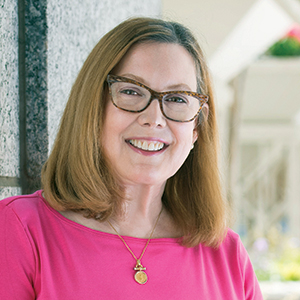
I was recently invited as the president of NASW to participate in the American Psychiatric Association’s inaugural Task Force on Interprofessional Collaboration. APA President Bruce J. Schwartz, MD, established the task force with the goal of bringing together mental health-related organizations to establish joint principles to promote effective collaboration intended to increase access to high-quality treatment for persons with serious mental illness, or SMI. Members from eleven organizations gathered on January 14, 2020, at the APA office in Washington, D.C., to launch the effort.
At the meeting, each representative presented his or her perspectives on the major impediments to care, potential solutions to solve access problems, current efforts being pursued by the organization, and models of care that might work to foster interprofessional collaboration. As the social workers in the room, NASW Senior Practice Associate Takia Richardson and I had a great deal to offer regarding ways of fostering interprofessional collaboration. We discussed the use of the Collaborative Care Model, the Chronic Care Model, the Sequential Intercept Model, the development of a System of Care for Children and Families and the use of the Wraparound Approach. Based on the discussion, I think the task force has a great deal of potential to create true opportunities for collaboration.
Interprofessional collaboration was also a major theme at two other presentations I attended in January. The first was at the Society for Social Work and Research conference, held in Washington. Darla Spence Coffey, president and CEO of the Council on Social Work Education, gave a presentation on a consensus study by the National Academies of Sciences, Engineering, and Medicine (NASEM): Integrating Social Care into the Delivery of Health Care: Moving Upstream to Improve the Nation’s Health. The Academies are private, nonprofit institutions that provide expert advice on some of the most pressing challenges in the nation and the world. The work of NASEM helps shape sound policies, inform public opinion, and advance the pursuit of science, engineering and medicine. (Learn more at nationalacademies.org.) NASW, along with other organizations — including CSWE — helped fund the study.
If you haven’t had an opportunity to review the NASEM report, I strongly encourage you to do so. It underscores the important role social workers play in integrating services that address social needs and the social determinants of health into the delivery of health care to achieve better health outcomes. The full report may be accessed at nationalacademies.org/SocialCare. NASW presented a webinar about the study earlier in January, which was recorded and is available for self-study. It is free for NASW members. There also will be a special breakout session on the study at the NASW National Conference, June 14-17, 2020, in Washington, D.C.
I had an excellent opportunity to participate in the beginning stages of operationalizing the NASEM recommendations at an event hosted at Rush University Medical Center in Chicago—the professional home of Robyn Golden, LCSW, who served as one of the committee members for the study. On January 23, members from various social service, health care and philanthropic organizations began the work of building a Chicagoland response to the recommendations identified in the report. In addition to an overview of the study, participants had the opportunity to hear from a panel representing medicine and medical education, social work and social work education, state government, and social service organizations.
Following the opportunity to hear panel members’ responses to the study, breakout discussions were facilitated to identify what could be done locally—including how efforts currently under way could be enhanced. It was an exciting day that not only accomplished a great first step into the future of integrating social care into health care, but also in testing a model for pulling key stakeholders together to shape what the future can be.
These are exciting times in our profession and I am optimistic that we can use opportunities presented by the American Psychiatric Association through its task force,
the NASEM study, and the model presented by our Rush colleagues to bring about the collaboration we so desperately need in our health care systems. The opportunities for better practice and better policy—and ongoing research to inform both—abound. Do we have the courage to tear down the silos that are holding us back, and support others in doing the same?
Contact Kathryn Wehrmann: president@socialworkers.org.